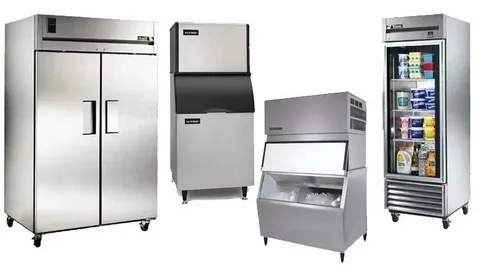The Hyundai Accent is a compact car known for its reliability and efficiency. One key component contributing to its performance is the crank angle sensor. This small yet mighty device is crucial in ensuring your engine runs smoothly. Understanding how it functions can help you appreciate its significance even more.
This article will explore ten significant benefits of the Hyundai Accent crank angle sensor. Whether you’re a seasoned mechanic or simply want to learn more about your vehicle, these insights will enhance your knowledge and highlight why this component deserves attention. Let’s dive into automotive technology and discover what makes the crank angle sensor essential to your driving experience!
How the Crank Angle Sensor Works
The crank angle sensor is vital to Hyundai Accent’s engine management system. It monitors the position and rotational speed of the crankshaft, providing essential data to the engine control unit (ECU). As the crankshaft rotates, the sensor generates electrical signals based on its position. These signals help determine when to fire each cylinder for optimal combustion. Accurately tracking these angles ensures that fuel delivery and ignition timing are perfectly synchronized. This synchronization leads to smooth engine operation.
Many crank angle sensors in modern vehicles use Hall-effect technology or variable reluctance principles. Both methods effectively detect changes in magnetic fields as the crankshaft spins. This real-time information lets your vehicle’s computer make precise adjustments, enhancing overall performance and efficiency while reducing emissions. The seamless communication between components keeps everything running smoothly under various driving conditions.
Improved Engine Performance
The Hyundai-Accent crank angle sensor is crucial in optimizing engine performance. It constantly monitors the crankshaft’s position and speed, providing real-time data to the engine control unit. This precise information allows for better timing adjustments during combustion cycles, resulting in smoother power delivery and quicker throttle response.
With enhanced ignition timing and fuel injection management, drivers can feel noticeable improvements in acceleration. This leads to more responsive driving experiences and maximizes horsepower output. Incorporating this advanced technology helps ensure that every drop of fuel is utilized efficiently. Thus, it elevates overall engine efficiency while keeping emissions at bay—an essential factor in today’s eco-conscious world.
Better Fuel Efficiency
The Hyundai-Accent crank angle sensor plays a vital role in fuel efficiency. It precisely determines the crankshaft’s position, directly affecting fuel injection timing and ignition sequences. With accurate readings, your engine can optimize its performance. This leads to less wasted fuel during combustion. As a result, you’ll experience improved gas mileage—an essential factor for your wallet and the environment.
Additionally, this sensor helps maintain an ideal air-fuel mixture when paired with other engine components. Achieving that balance is crucial for efficient fuel burning. Consequently, you’ll notice fewer visits to the gas station. Drivers often report longer distances between fill-ups after installing or maintaining their crank angle sensors. This enhancement not only saves money but also reduces carbon emissions over time. Enjoying better fuel efficiency transforms daily commutes into more economical journeys.
Enhanced Safety Features
The Hyundai-Accent crank angle sensor is crucial in enhancing vehicle safety. This small yet powerful component ensures that the engine timing is accurately synchronized with the overall operation of your car. When this sensor functions correctly, it helps prevent misfires and stalls, which can lead to dangerous situations on the road. An efficiently running engine contributes significantly to maintaining better control during driving.
Moreover, by improving engine performance, the crank angle sensor supports advanced safety features like Electronic Stability Control (ESC). This technology assists drivers in maintaining traction during slippery conditions or abrupt maneuvers. A well-functioning crank angle sensor ultimately leads to smoother acceleration and more predictable handling. Drivers can feel confident navigating various terrains and weather conditions when their vehicle’s systems work harmoniously together.
Cost-Effectiveness of Hyundai Accent Crank Angle Sensor
The Hyundai Accent crank angle sensor offers significant cost-effectiveness due to its reliable performance, low maintenance needs, and relatively affordable replacement costs.
Affordable Replacement Costs
- The crank angle sensor is generally affordable to purchase and replace, making it a cost-effective option for those needing a replacement. The sensor is relatively low-cost and widely available compared to more complex engine components.
Fuel Efficiency Improvement
- A properly functioning crank angle sensor ensures optimal ignition timing, directly contributing to improved fuel efficiency. This efficiency reduces fuel expenses, making the sensor valuable for cost-conscious drivers.
Minimizes Engine Wear and Tear
- By providing precise engine timing data, the crank angle sensor helps maintain the engine’s optimal performance, reducing wear on internal components. This longevity translates to fewer repairs and replacements, saving on long-term maintenance costs.
Reliability and Durability
- The sensor’s durable construction allows it to withstand engine heat and vibration, ensuring a long lifespan. Its reliability reduces the frequency of breakdowns, minimizing repair expenses and contributing to overall cost-effectiveness.
Prevention of Major Engine Issues
- The crank angle sensor helps prevent engine misfires and stalling when working correctly. Avoiding these issues can save the owner from costly repairs related to engine damage or further diagnostic services.
Compatibility with Aftermarket Options
- The crank angle sensor is often available as a high-quality aftermarket option. These alternatives provide the same functionality as OEM parts at a fraction of the price, enhancing its cost-effectiveness.
The Hyundai-Accent crank angle sensor’s role in maintaining efficient engine operation and its affordable replacement options ensure excellent cost-effectiveness. This sensor’s reliability reduces maintenance frequency, fuel expenses, and potential engine repairs, making it a budget-friendly choice for Hyundai Accent owners.
Durability and Longevity
The Hyundai-Accent crank angle sensor is built to withstand demanding conditions. It’s designed with high-quality materials that resist wear and tear over time. This component plays a crucial role in ensuring your engine runs smoothly. Its robust construction means it can endure extreme temperatures and vibrations without failing.
Many drivers report that their sensors last well beyond typical expectations. This durability translates into fewer replacements, saving you money in the long run. With proper care, this sensor maintains its effectiveness for years. The longevity of the Hyundai-Accent crank angle sensor ensures reliable performance throughout the lifespan of your vehicle. Investing in this part improves immediate functionality and enhances overall reliability on the road.
Requires Low Maintenance
The Hyundai-Accent crank angle sensor is designed for longevity with minimal upkeep. Once installed, it typically requires very little attention throughout its lifespan. Unlike other components that may need frequent checks or replacements, this sensor operates quietly in the background, ensuring optimal engine performance without demanding constant monitoring. Drivers can appreciate the convenience of a low-maintenance solution that fits seamlessly into their vehicle’s system. It lets you focus on enjoying your drive rather than worrying about potential issues.
Regular inspections during routine maintenance are usually sufficient to keep everything running smoothly. The simplicity of the design contributes to its reliability and reduces the chances of unexpected failures. Investing in a Hyundai-Accent crank angle sensor means less hassle, letting drivers enjoy a dependable ride with peace of mind.
Smooth Acceleration and Handling
The Hyundai-Accent crank angle sensor ensures smooth acceleration and handling. Accurately detecting the crankshaft position provides real-time feedback to the engine control unit. This precise data allows for optimal fuel injection timing and ignition sequence. As a result, drivers experience seamless power delivery when they hit the gas pedal. No more jerky movements or unexpected stalls during acceleration. Moreover, improved throttle response enhances overall driving dynamics. Whether navigating city streets or cruising highways, drivers can expect consistent performance without hiccups.
A well-functioning crank angle sensor also contributes to better stability during turns. The integration with other vehicle systems ensures that steering feels responsive and predictable at all speeds. With this sensor in place, every journey becomes more enjoyable as you effortlessly navigate through different terrains. Smooth rides are not just about comfort; they also enhance confidence behind the wheel.
Compatibility with Other Vehicle Systems
The Hyundai-Accent crank angle sensor stands out for its remarkable compatibility with various vehicle systems. This integration ensures smooth communication between the engine management system and other crucial components. It plays a vital role in synchronizing ignition timing, essential for optimal performance. When paired with advanced fuel injection systems, it enhances overall efficiency by ensuring the right amount of fuel enters the combustion chamber at precisely the right time.
Additionally, the sensor can work seamlessly with onboard diagnostics. This capability allows mechanics to quickly identify issues related to engine timing or misfires without extensive troubleshooting. Such versatility makes this sensor an invaluable asset for everyday drivers and automotive professionals. Its ability to communicate effectively across multiple systems significantly maintains peak performance levels in your Hyundai Accent.
Increased Resale Value
Upgrading your Hyundai Accent with a quality crank angle sensor can significantly boost its resale value. Prospective buyers often look for vehicles that have been well-maintained and feature reliable components. When the crank angle sensor functions optimally, it reflects overall engine performance. A well-performing engine becomes an attractive selling point. Moreover, potential owners appreciate advanced features that improve vehicle efficiency and safety. Highlighting these benefits during a sale can make your Accent more appealing.
Additionally, keeping records of maintenance and upgrades, like the crank angle sensor replacement, demonstrates responsible ownership. This transparency builds trust and encourages offers closer to your asking price. Investing in essential parts enhances the driving experience and pays off when it’s time to sell or trade-in your vehicle.
Professional Installation vs DIY Installation
When installing the Hyundai-Accent crank angle sensor, there are two main routes: professional installation or DIY. Each option has its merits. Choosing a professional means tapping into expertise. Certified mechanics understand the intricacies of vehicle systems and will ensure everything is installed correctly. This reduces the risk of errors that could lead to further issues.
On the flip side, DIY installation appeals to many for various reasons. It can be cost-effective and provides a sense of accomplishment. However, without proper knowledge or tools, it might become frustrating. Consider your comfort level with car repairs before making a decision. Weighing your experience against potential challenges is essential in this scenario. Whether you opt for professional help or tackle it yourself depends on your confidence and skill set.
Conclusion
Investing in a Hyundai Accent Crank Angle Sensor can significantly enhance your driving experience. Its role in optimizing engine performance cannot be overstated. With improved fuel efficiency and better safety features, it’s a component that pays off in more ways than one. The sensor’s durability ensures long-term reliability while requiring minimal upkeep, making it an attractive option for any vehicle owner. Moreover, its compatibility with various systems adds to its appeal. The benefits are clear whether you’re looking at cost-effectiveness or resale value. Understanding these advantages could guide you toward making informed vehicle maintenance and upgrade decisions.
FAQs
What Is A Hyundai Accent Crank Angle Sensor?
The Hyundai Accent crank angle sensor is a critical component that measures the position and rotational speed of the engine’s crankshaft. This information helps optimize engine timing for better performance.
How Does A Malfunctioning Crank Angle Sensor Affect My Vehicle?
A faulty crank angle sensor can lead to poor engine performance, misfiring, or stalling. You may also notice increased fuel consumption.
Can I Replace The Crank Angle Sensor Myself?
While someone with mechanical skills can replace it, professional installation is often recommended to ensure proper function and avoid complications.
What Signs Indicate That My Crank Angle Sensor Needs Replacing?
Common signs include:
- Difficulty starting your vehicle.
- Erratic idling.
- Reduced power during acceleration.
- Warning lights on your dashboard.
Is It Expensive To Replace A Hyundai-Accent Crank Angle Sensor?
The cost varies depending on whether you choose a professional installation or do it yourself. Given its benefits, it’s generally considered a cost-effective maintenance option.
| Related Business Listings |
| Contact Directory |
| Local Business Profiles |




